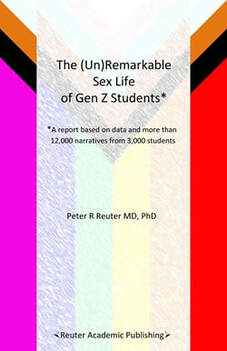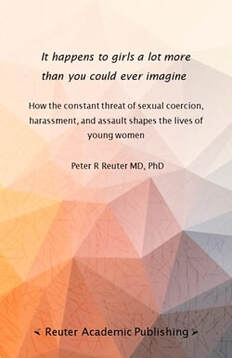Research highlight
Comparing the awareness of and beliefs in sexually transmitted infections among university students in Madagascar and the United States of America
Young adults have a higher risk of contracting sexually transmitted infections (STIs) than other age groups. This risk may be mediated by their social and cultural setting, which can impact young adults’ awareness of, beliefs in, and risk of contracting STIs (including HIV/AIDS). In order to understand how these factors vary among young adults of different cultures, it is important to study these issues on a cross-cultural scale. This study aimed to increase understanding of the relationship between the culture of a place of study and: (1) STI awareness; (2) belief in STIs; and (3) self-reported STI prevalence in the study population. Survey data were collected from university students in Madagascar (n = 242 surveys in 2013) and the United States of America (n = 199 surveys in 2015). Compared to students at the American university, students at the Malagasy university: (1) did not appear to have a conclusively lower awareness of STIs; (2) did not differ in rates of belief in the existence of gonorrhea and syphilis, but had higher rates of disbelief in HIV/AIDS; and (3) were more likely to report having been infected with syphilis and gonorrhea, but not with HIV/AIDS. Students at the Malagasy university also listed different reasons than the students at the American university for why they believed in the existence of STIs. These findings highlight the need for further cross-cultural research to better adapt intervention strategies to different cultural settings.
Young adults have a higher risk of contracting sexually transmitted infections (STIs) than other age groups. This risk may be mediated by their social and cultural setting, which can impact young adults’ awareness of, beliefs in, and risk of contracting STIs (including HIV/AIDS). In order to understand how these factors vary among young adults of different cultures, it is important to study these issues on a cross-cultural scale. This study aimed to increase understanding of the relationship between the culture of a place of study and: (1) STI awareness; (2) belief in STIs; and (3) self-reported STI prevalence in the study population. Survey data were collected from university students in Madagascar (n = 242 surveys in 2013) and the United States of America (n = 199 surveys in 2015). Compared to students at the American university, students at the Malagasy university: (1) did not appear to have a conclusively lower awareness of STIs; (2) did not differ in rates of belief in the existence of gonorrhea and syphilis, but had higher rates of disbelief in HIV/AIDS; and (3) were more likely to report having been infected with syphilis and gonorrhea, but not with HIV/AIDS. Students at the Malagasy university also listed different reasons than the students at the American university for why they believed in the existence of STIs. These findings highlight the need for further cross-cultural research to better adapt intervention strategies to different cultural settings.
The (Un)Remarkable Sex Life
|
It happens to girls a lot more than you could ever imagineHow the constant threat of sexual coercion, harassment, and assault shapes the lives of young women
|

A fascinating report exploring Gen Z's attitude toward gender identity, sexual orientation, casual sex, religion, sex and drugs and alcohol, and more.
Based on data collected over seven years, the book takes readers on a journey of discovery of who Gen Z really is. Using some of the more than 12,000 comments, explanations, or narratives, the report shows the many facets of Gen Z. No matter where readers stand before they start reading, what generation they belong to, or what preconceived notions about Gen Z they have, everyone will have a better and more nuanced understanding of who Generation Z is once they reach the last page. Continue reading ... |

Sexual coercion, harassment, and violence are a constant threat to the physical and emotional well-being of students, especially female students.
Female students are twice as likely as male students to experience sexual coercion (42% vs. 19%), and they are three times as likely to be victims of forced sexual activity than male students (25% vs. 8%). Not surprisingly, LGBTQ+ students reported considerably higher rates, with more than half of pansexual (55%), bisexual (54%), and transgender/gender-nonconforming (TGN) students (53%) reporting being victims of sexual coercion and harassment. Continue reading... |
Religion still impacts Gen Z's sexual behavior
|
Religion has been, and still is, one of the major forces of control over sexuality. The Judeo-Christian faiths practiced by many in the U.S. typically are against premarital sex, non-relationship sex (or casual sex), and cohabitation and emphasize remaining abstinent until marriage. Studies have found that religious behavior is a strong predictor of sexual behavior, with higher levels of devoutness correlated to a later age of first sexual experiences, fewer lifetime sex partners, and less engagement in casual sex.
Religious attitudes do not guarantee sexual abstinence before marriage in all cases. The percentage of religious Gen Z students in my survey who admitted to having engaged in sexual activity – oral, vaginal, or anal sex – already was 70% compared to 76% for their non-religious peers. The percentage of religious students who had engaged in sexual activity during the past 30 days was also slightly lower at 55% compared with 59% for non-religious students. The average number of sex partners over the last twelve months, however, was the same for both groups, with 2.5 for religious and 2.6 for non-religious respondents. Continue reading... |
Don’t think you have a gender identity? Think again
|
A freshman student participating in my survey ‘Why do students have sex?’ responded to the question ‘What is your gender identity?’ by writing, “I have no f****** gender identity. I AM a Male. That's what my body composition is, so it doesn't f****** matter what my "identity" is.”
While this student’s reaction certainly was influenced by and typical of the current backlash against the LGBTQ+ community in the U.S., not so long ago, many people would have expressed the same or a similar sentiment or wondered what gender identity was in the first place. A hundred years ago, the only use of the term ‘gender’ was in grammar, where it referred to grammatical categories that divide words into masculine, feminine, and neuter classes, mainly in languages such as German, French, Spanish, or Italian. Continue reading... |
Linus Pauling – The man who birthed the vitamin C craze
|
Without a shadow of a doubt, Linus Pauling was one of the most brilliant scientists and activists of the 20th century. He is notable for being one of the few individuals to receive two Nobel Prizes and still is the only person to receive two unshared Nobel Prizes: the Nobel Prize in Chemistry in 1954 for his research into the nature of the chemical bond and its application to the elucidation of the structure of complex substances and the Nobel Peace Prize in 1962 for his activism against nuclear weapons testing. Yet, Pauling's legacy is a complex one, marked by significant contributions to science and controversial stances in the field of health and nutrition, because he played a significant role in popularizing the concept of antioxidants and their potential health benefits. His influence in this area is mainly linked to his advocacy of high doses of vitamin C.
The first documented symptoms of vitamin C deficiency, which leads to scurvy, can be traced back to ancient times. The Ebers Papyrus, dating around 1550 BC, is one of the earliest records that accounts for a disease likely to be scurvy. It suggested the treatment of this disease with onions, which are known to contain small amounts of vitamin C. Hippocrates, the ancient Greek physician often referred to as the 'father' of Western medicine, also described symptoms associated with scurvy around 400 BC. He noted characteristics such as foul breath, loose gums, and nosebleeds. Continue reading... |
|
Getting drunk isn’t always just care-free fun
|
The desire of undergraduate and graduate students for an enjoyable college experience, including partying and having a good time, is not a new phenomenon. (See also “Good times lead to good feelings” - Being out with friends encourages students to meet someone and engage in casual sex) College life is often associated with newfound freedom, independence, and the opportunity to socialize and form lasting friendships. In recent years, there has been increased awareness about the potential negative consequences of excessive partying, including issues related to mental health, alcohol consumption, and consent. This awareness may have led to more responsible behaviors on some campuses. Studies and surveys have also revealed that Gen Z tends to engage in less alcohol consumption compared to previous generations, such as the millennials, Generation X, and baby boomers. Therefore, it doesn’t come as a surprise that students’ descriptions of their drinking habits in responses submitted to my surveys don’t include stories of binge drinking or similar.
Continue reading... |
|
© 2016-2024 Peter Reuter. All rights reserved.
|



